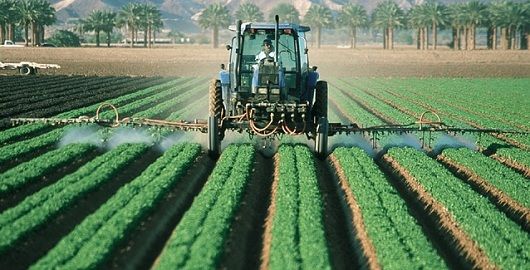Checking Out the Differences In Between Commercial Farming and Subsistence Farming Practices
The duality between commercial and subsistence farming techniques is noted by varying goals, functional ranges, and resource application, each with profound implications for both the environment and society. Conversely, subsistence farming stresses self-sufficiency, leveraging traditional methods to sustain family demands while nurturing community bonds and social heritage.
Economic Purposes
Economic goals in farming methods usually dictate the methods and scale of operations. In commercial farming, the main economic goal is to maximize profit.
In comparison, subsistence farming is mainly oriented towards meeting the prompt requirements of the farmer's family, with surplus manufacturing being very little - commercial farming vs subsistence farming. While industrial farming is profit-driven, subsistence farming is centered around sustainability and durability, reflecting a fundamentally various set of economic imperatives.

Scale of Operations
The distinction in between commercial and subsistence farming becomes particularly apparent when thinking about the range of operations. Industrial farming is characterized by its large nature, typically encompassing considerable tracts of land and using advanced equipment. These operations are normally integrated right into worldwide supply chains, producing substantial quantities of plants or livestock meant to buy in international and residential markets. The scale of commercial farming permits economic situations of scale, leading to reduced expenses per device with mass production, boosted effectiveness, and the ability to purchase technological innovations.
In stark contrast, subsistence farming is usually small, concentrating on producing simply sufficient food to fulfill the prompt demands of the farmer's family members or neighborhood area. The land location entailed in subsistence farming is often limited, with less accessibility to modern-day innovation or automation. This smaller scale of operations mirrors a dependence on typical farming strategies, such as hand-operated labor and basic devices, causing lower efficiency. Subsistence farms prioritize sustainability and self-sufficiency over profit, with any surplus typically traded or bartered within local markets.
Resource Application
Commercial farming, defined by large operations, commonly employs sophisticated technologies and automation to optimize the usage of resources such as land, water, and plant foods. Precision farming is significantly embraced in commercial farming, utilizing information analytics and satellite modern technology to check crop wellness and enhance resource application, further enhancing yield and source effectiveness.
In contrast, subsistence farming operates on a much smaller scale, mostly to meet the instant requirements of the farmer's house. commercial farming vs subsistence farming. Resource utilization in subsistence farming is usually limited by economic restraints and a reliance on conventional methods. Farmers generally utilize hand-operated labor and natural deposits readily available locally, such as rainwater and organic compost, to grow their crops. The focus is on sustainability and self-direction instead of taking full advantage of result. Subsistence farmers may face obstacles in resource management, including limited access to boosted seeds, fertilizers, and irrigation, which can limit their capability to enhance performance and productivity.
Ecological Impact

On the other hand, subsistence farming, exercised on a smaller sized range, usually employs conventional methods that are a lot more in consistency with the surrounding setting. Plant turning, intercropping, and natural fertilizing prevail, advertising dirt wellness and lowering the demand for artificial inputs. While subsistence farming typically has a lower environmental impact, it is not without challenges. Over-cultivation and inadequate land monitoring can lead to dirt disintegration and logging in many cases.
Social and Cultural Ramifications
Farming techniques are deeply linked with the social and social material of areas, affecting and mirroring their worths, practices, and webpage financial frameworks. In subsistence farming, the focus gets on growing adequate food to fulfill the instant requirements of the farmer's household, commonly promoting a solid sense of community and shared responsibility. Such practices are deeply rooted in local practices, with expertise gave via generations, thus preserving cultural heritage and enhancing public connections.
Conversely, commercial farming is primarily driven by market demands and success, usually causing a change in the direction of monocultures and large procedures. This approach can bring about the erosion of conventional farming techniques and cultural identifications, as local customs and expertise are replaced by standard, commercial methods. Additionally, the emphasis on effectiveness and revenue can often reduce the social cohesion located in subsistence communities, as financial purchases replace community-based exchanges.
The duality in between these farming methods highlights the wider social ramifications of farming choices. While subsistence farming supports cultural continuity and neighborhood interdependence, business farming lines up with globalization and economic development, usually at the expense of standard social frameworks and social diversity. commercial farming vs subsistence farming. Stabilizing these elements remains a crucial challenge for lasting farming advancement
Conclusion
The assessment of commercial and subsistence farming methods reveals significant differences in goals, scale, resource use, environmental effect, and social ramifications. Industrial farming prioritizes revenue and efficiency through large operations and advanced modern technologies, commonly at the expense of environmental sustainability. On the other hand, subsistence farming emphasizes self-sufficiency, making use of regional sources and conventional methods, thereby advertising cultural preservation and community communication. These contrasting strategies highlight the intricate interaction in between financial growth and the requirement for socially inclusive and environmentally lasting agricultural methods.
The dichotomy in between business and subsistence farming techniques is marked by varying goals, operational scales, and source application, each with see here now profound ramifications for both the environment and culture. While industrial farming is profit-driven, subsistence farming is centered around sustainability and durability, showing an essentially various set of financial imperatives.
The distinction in between commercial and subsistence farming ends up being specifically apparent when considering the range of procedures. While subsistence farming supports social continuity and neighborhood connection, commercial farming lines up with globalization and financial growth, usually at the cost of standard social structures and cultural variety.The exam of industrial and subsistence farming techniques reveals considerable distinctions in objectives, scale, resource usage, ecological impact, and social ramifications.